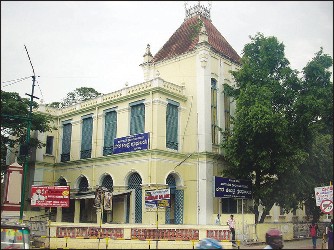
Title: Bougainvilla Magic, Author: Lalitha Rao, Columnist and Writer, Pages: 160, Printed at: Surina Graphics, Year: 2015.
In her first publication in book form, writer Lalitha Rao, who has travelled far and wide in India and abroad, presents a collection of 48 articles published in different newspapers and magazines, including Star of Mysore, over the past 20 years under nine chapters, laced with artfully created illustrations by Pankaj Moghe.
The author has dedicated this 160-page book ‘Bougainvilla Magic’ to her Ma and Dad.
The author refers to the decades-old reputation of Mysuru as a laid-back, slowly-strolling-through-life kind of city that seemed to have undergone a change — shopping malls had sprung up, supermarkets glitteringly invited one to shop breathlessly and life was not about mosaranna and bise bele bath alone: KFC and Pizza Hut too have arrived on scene.
“Mysuru possesses a culture and social ambience quite unlike other cities (Delhi, Mumbai and Chennai) where she has lived in. The joy of waking up to cool breezes, or rainy mornings, or gusty winds, is unparalleled. Even the vegetables taste better here and I’m sure that’s not just my imagination,” Lalitha Rao describes with unadulterated joy.
Recalling her childhood visits to Ooty, about 160 kms away from Mysuru, which were mostly in the nature of picnics, the author says she used to fall into streams regularly and her mummy had to carry an extra frock along as routine exercise.
On her stay abroad, Lalitha Rao says the Magic of Oman lies partly in the friendly and helpful nature of its people.
The author also acknowledges the inspiration she got from the following books: The Fountainhead and Anthem by Ayn Rand; Othello by Shakespeare; Jonathan Livingston Seagull by Richard Bach; Novels and short stories by P.G. Wodehouse and, of course, the Ramayana and Mahabharata as retold by C. Rajagopala.
The author also recalls about a time when she used to wake up to the tanpura drone of All India Radio as it alerted her about the new day. It was the signal to get out of bed, brush and slowly sip tea and peruse the newspaper. Today, she delays switching on the TV as long as possible, as the news in full 3D, with the anchor booming or shrilling across your senses, is more than what she can take… “Listening to radio has for most of us become an activity we follow while driving to get somewhere.”
“Coorg is barely a hundred kilometres away from Mysuru, but the specialties there are predominantly non-vegetarian, with pork taking centrestage. In the old days the plantation owners would down every mouthful with fresh, foaming glasses of toddy,” says the author with awe about Kodavas.
School days: Recalling her school days in Simla, she says it was an overcharged hormonal world of 16-year-olds; the one who kept them on track with her sheer presence was her class teacher, Mother Joseph Catherine.
“Today if I write, it is because of this great teacher who found something of value in me and has nurtured it all these years. Mother Joseph Catherine, Irish nun, and my mentor, is probably in heaven now. I hope she looks down sometimes at her former pupils and smiles.”
Writing about the librarians in her book, the author talks about how the librarians are used to the strangest demands. “I have always felt that a library should be the friendliest place, where you can curl up in a corner with your book or browse shelves undisturbed by time or crowds.”
Lalitha Rao, who joins a select band of women-writers of Mysuru, is the daughter of an army officer and wife of an architect. She has Master’s degrees in English Literature and Library Science and worked at the Alliance Francaise in Chennai and the Caledonian College of Engineering in Muscat, Oman.
Her book Bougainvilla Magic is scheduled for launch tomorrow (July 6) at 6 pm at Club House terrace, Sankalp Central Park, Jawa Main Road, Yadavagiri, Mysuru. —NGB
source: http://www.starofmysore.com / Star of Mysore / Home> Feature Articles / Sunday – July 05th, 2015







